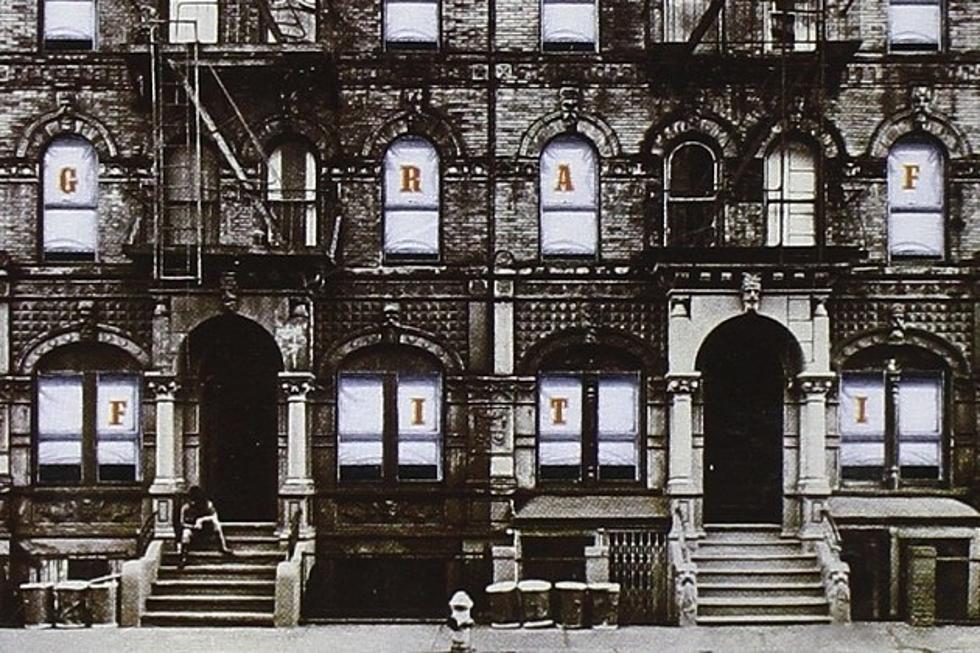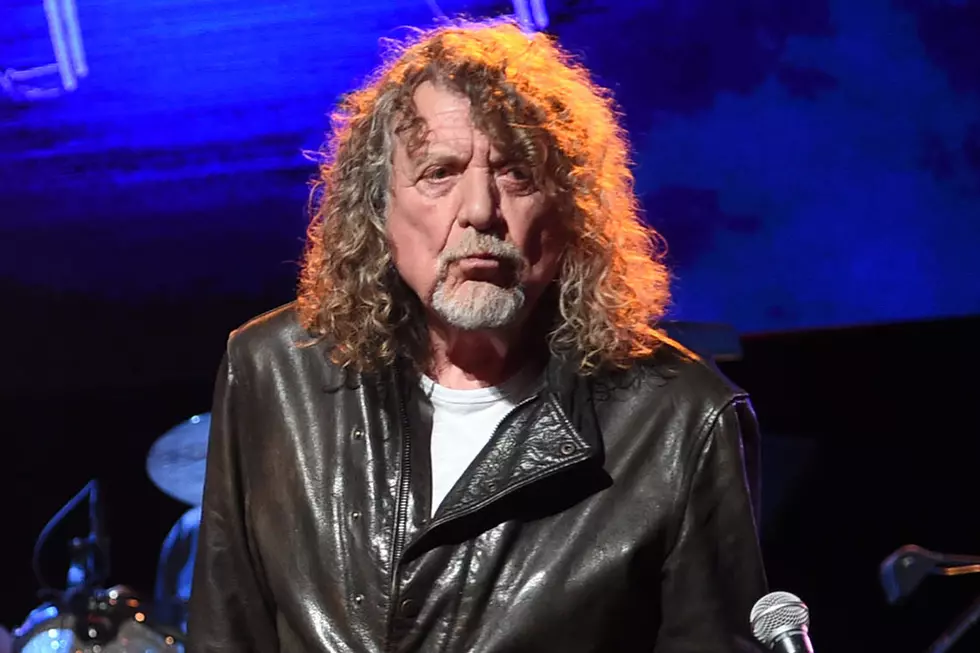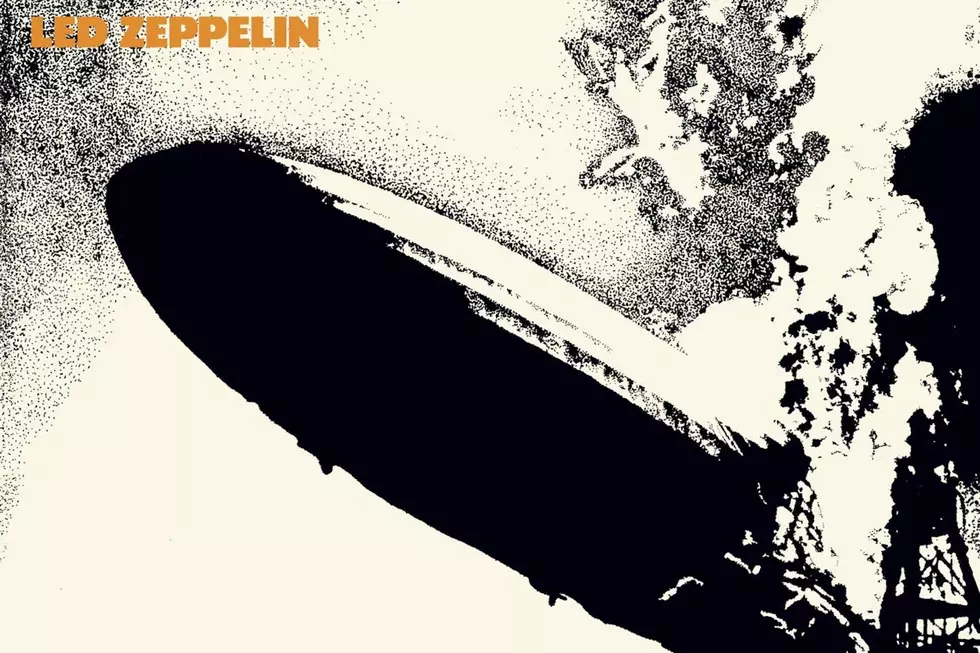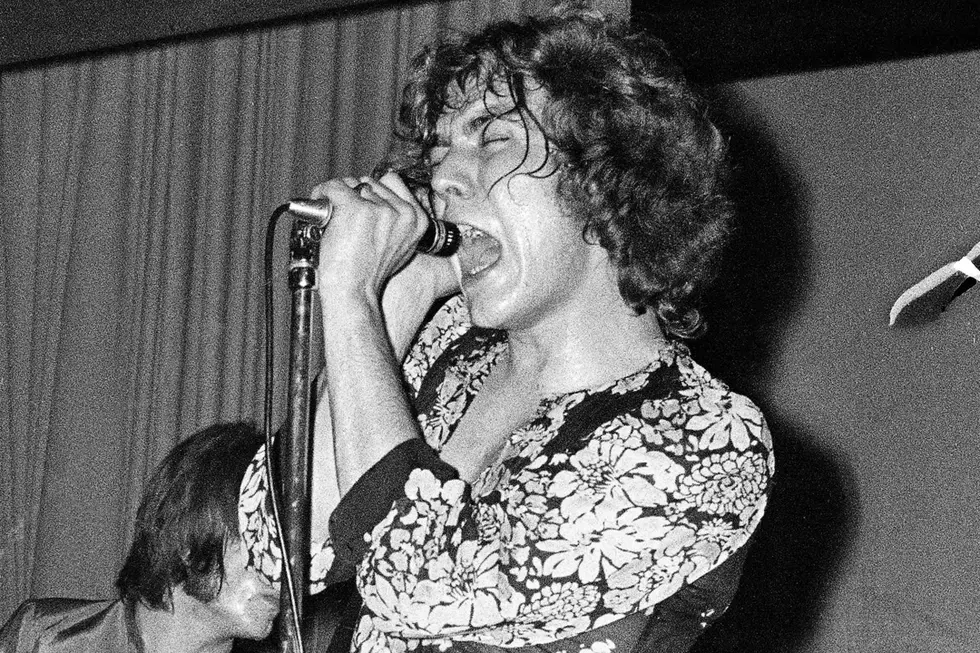
Led Zeppelin’s ‘Physical Graffiti’ Songs, Ranked Worst to Best
Fans can make a case for virtually every Led Zeppelin album’s incomparable greatness -- but only one represents the very pinnacle of the group’s career achievements: 1975's expansive, all-encompassing (and arguably all-eclipsing) double album Physical Graffiti. Everything Led Zeppelin ever were can be found here, and anything else that might have been is frankly not worth considering. So, as we celebrate this historic release's 40th anniversary, we dissect every one of its 15 tracks, from the merely stunning to the categorically perfect, knowing full well that we wouldn't want to imagine life without any of them.
- 15
“Boogie With Stu”
Even perfect albums have their weak links, and “Boogie With Stu” — named after Rolling Stones sideman Ian Stewart, who sat in on this tune — is one of Physical Graffiti's. The song has its fans, those who champion its melange of ‘50s rock, clack-clack percussion and Stewart’s boogie-woogie piano, but everyone else can hear why the track sat in the vaults since 1971.
- 14
“Night Flight”
Another leftover from the fourth album's sessions, “Night Flight” languished in the vaults for almost four years before being unearthed to pad Physical Graffiti’s double-album ambitions, but that doesn’t mean it’s without merit. Composed primarily by John Paul Jones, whose Hammond organ dominates the song, "Night Flight" boasts a memorable lyric by Robert Plant about a young man trying to avoid the Vietnam draft.
- 13
“Bron-Yr-Aur”
“Bron-Yr-Aur” returned listeners to the remote cottage nestled deep in the Welsh countryside where Jimmy Page and Robert Plant (whose parents owned it) composed the bulk of 1970’s Led Zeppelin III. And just as that landmark album provided a welcome creative departure in the group’s career, this spartan but strikingly beautiful acoustic performance by Page does for the predominantly electrified proceedings on Physical Graffiti.
- 12
“Sick Again”
Tucked way at the very end of Physical Graffiti, “Sick Again” is nevertheless a corker of a band performance, pushed into overdrive by Jimmy Page’s slippery guitar and John Bonham’s merciless drum assault. Like its lyrics, in which Robert Plant takes pity (well, not that much pity) on the hordes of groupies that would nightly sacrifice themselves to their rock gods, the music leaves listeners clamoring for more.
- 11
“Black Country Woman”
"Black Country Woman''s backstory is arguably more intriguing than the song itself, which was recorded in Mick Jagger’s backyard during the Houses of the Holy sessions, where it captured the sound of an airplane overhead, giving new meaning to the concept of field recordings. Lyrically, the song simply transplants a classic cheating-woman blues motif to Plant and Bonham’s origins in England’s “black country.”
- 10
“The Wanton Song”
It may not be the brightest light on Physical Graffiti, but with its overdriven guitars and relentless riff, “The Wanton Song” showcases Led Zeppelin working in their fundamental, frill-free heavy rock element. With Jimmy Page as its driving force, the song’s forceful musical bed (including a mildly dissonant counterpoint riff midway through) is perfectly suited to the lusty and uncensored sexual conquest of its lyrics.
- 9
“Down by the Seaside”
At the absolute opposite end of the sonic spectrum from “The Wanton Song” (and thus representative of the turn-on-a-dime songwriting fearlessness that made Zeppelin so lovable), “Down by the Seaside” is a wistful fantasy awash in trembling guitars and bluesy electric piano breakdowns. And that’s before it briefly transforms into a completely different tune halfway through; like an instance of songwriting Jeckyll and Hyde, the likes of which kept Led Zeppelin fans ever on their toes.
- 8
“Houses of the Holy”
Another session holdover, this time from the 1973 album that bears this name, “House of the Holy” is a timeless Led Zeppelin number that wouldn’t have sounded out of place on any of their LPs. But we’ll gladly celebrate its inclusion on Physical Graffiti, where it provides a grounding presence to the oft-experimental surroundings with the help of John Bonham’s squeaky drum pedal — so perfect the band didn’t even feel the need to “fix” it in the final mix.
- 7
“Custard Pie”
Leave it to Led Zeppelin to kick off the album many consider their magnum opus with a simple recipe for one of their favorite desserts. Wait, what? Yes, the song is actually about sex (as usual), despite it collecting a clever pastiche of vintage blues lyrics (from Robert Johnson, Blind Boy Fuller, etc.) over John Bonham’s rock-solid foundation and Jimmy Page and John Paul Jones’ dueling guitar and Clavinet riffs. And did we mention the absolutely massive, continent-sized groove?
- 6
“Trampled Under Foot”
This may prove to be a rather contentious choice this low in the rankings of Physical Graffiti songs, but “Trampled Under Foot” is a singular cut in Zeppelin's canon, since John Paul Jones’ hypnotic funk-inspired Clavinet riff, rather than Jimmy Page’s guitar, drives it. Nevertheless, the tune has snagged more radio airplay than almost any other Physical Graffiti song, and is apparently one of Robert Plant’s favorites, to boot.
- 5
“The Rover”
A quintessential Led Zeppelin hard rocker, “The Rover” matches a menacing Jimmy Page lick with John Bonham’s reliable pounding and John Paul Jones’ busy bass work, while Robert Plant muses about life on the road with one of the world’s most powerful touring machines. Seems simple, right? Well, it is, but only the greatest talents can turn simplicity into amazement, and that about sums up the enduring wonder that is Led Zeppelin.
- 4
“In the Light”
One of Physical Graffiti’s best-loved epics, “In the Light” features the sort of songwriting innovation and clever instrumental gimmicks that set Led Zeppelin apart from every other heavy rock band of the ‘70s and beyond. John Paul Jones’ synthesizer intro is backed by Jimmy Page sliding a violin bow across his guitar to create a droning effect. The ensuing sequence of counterpoint melodies and riffs strung out over John Bonham’s deliberate beats and underneath Robert Plant’s soaring wails comprise a kaleidoscope of sound with few parallels in the classic-rock world.
- 3
“In My Time of Dying”
Zeppelin’s greatest epic, all 11 minutes of it, brings the first side of Physical Graffiti to an awe-inspiring blues workout, almost as if the band was daring fans to flip the record over and see what wonders lay beyond. Let's celebrate Jimmy Page’s extensive slide guitar vamps across “In My Time of Dying,” along with John Bonham’s intentionally reverb-drenched drum sound, based on the same effect used on the fourth album's “When the Levee Breaks.”
- 2
“Ten Years Gone”
With all due respect to “Stairway to Heaven,” Led Zeppelin never crafted a more musically and emotionally satisfying power ballad than “Ten Years Gone.” With its brilliantly arranged contrasts of heavy and light, aching vocal performance by Robert Plant and panoramic sweep leading up to its final crescendo, this is a veritable songwriting clinic by the masters of the craft. Everything that should have been put in was, and everything that should have been left out was too. The end result is absolute perfection.
- 1
“Kashmir”
When you think of Physical Graffiti, “Kashmir” tends to be the first and last song that comes to mind. As colossal as the Zeppelin legacy itself, “Kashmir” captures all four band members at the peak of their talents: You have Jimmy Page's unconventional DADGAD tuning inspired by similar modal Arabian ones; Robert Plant's vivid impressions of his travels across Northern Africa; John Bonham's thunderous but meticulously planned percussion; and John Paul Jones' orchestral arrangement, both for real strings and his Mellotron. The final achievement is mesmerizing, majestic, mind-blowing. “Kashmir” remains an indestructible cornerstone of classic rock.
- BONUS
Think You Know Led Zeppelin
More From Ultimate Classic Rock









